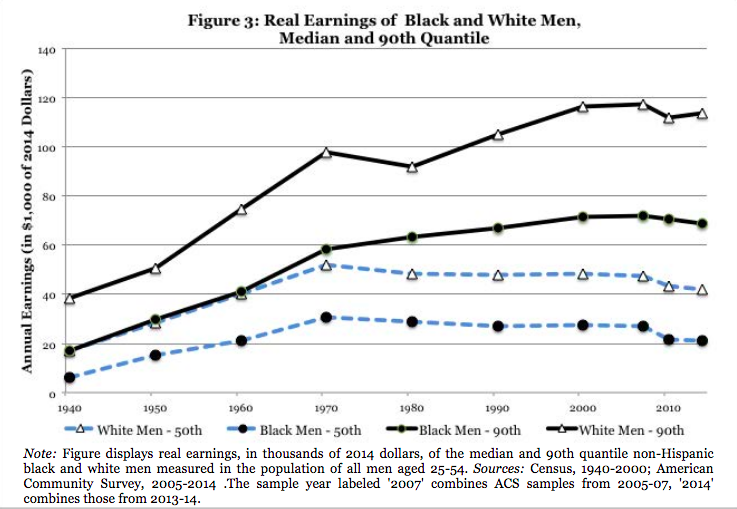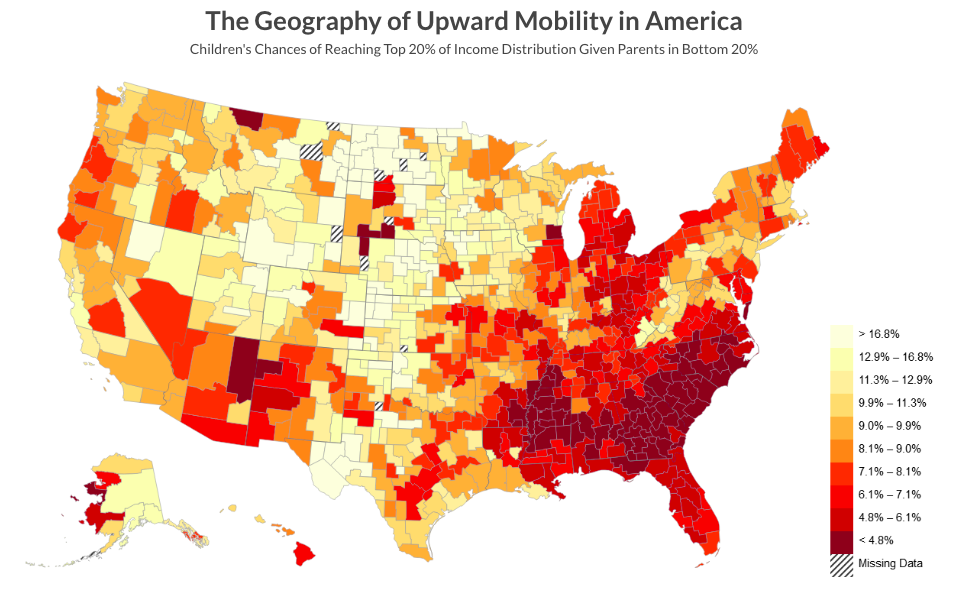Reparations are now a consensus position within the 2020 Democratic primary.
Let that sink in. From the central plank of Rev. Jesse Jackson’s presidential platform in 1984 and 1988, to Ta-Nehisi Coates’s blockbuster Atlantic essay in 2014 — reparations for the descendants of slavery have gone from fringe to mainstream in roughly a generation. What Bernie Sanders called “divisive” only a few short years ago now even finds support among thoughtful conservatives like David Brooks and Michael Brendan Dougherty.
Yet behind the moral clarity of reparations is immense disagreement about what form it ought to take. Should reparations be direct cash payments or land grants? Does a race-neutral “Baby Bond” or refundable tax credit count if white families also benefit? Most Democratic primary candidates have kicked the can to an independent commission. “I support that we should study it,” in the words of Kamala Harris. While that may be smart politics, a backlash is already brewing among activists who insist reparations should be, by definition, directed to American descendants of slavery only.
Before going down that path, we should think carefully about what a program of direct cash payments to the descendants of slavery would signify. After all, an act of reparation is distinct from an act of restitution or compensation. Reparations fall into the category of transitional justice — one part economic, one part symbolic redress for human rights violations that kicks-off a “reparative” process of truth and reconciliation. They are therefore as much about publicly confronting an injustice as repairing some discrete, calculable harm. A direct payment, in contrast, risks trivializing slavery as merely an issue of “unjust transfer and acquisition,” as if the stolen fruits of African American labor neatly correspond to an accounts payable hidden deep within the U.S. Treasury.
Slavery was an act of theft, to be sure. But even moreso, it was an act of colonization — one that retarded the development of a population and entire region for generations after emancipation. To truly address that intergenerational legacy, struggling African American communities need investments in infrastructure and a strategy for developing a high-wage workforce. In other words, they need industrial policy.
Social Capital and Economic Development
Whites who lost substantial wealth during Reconstruction bounced back within a generation or two. The reason? Despite suffering a large, uncompensated loss, they had existing social capital (their alma mater, a rich relative, a political connection) that opened doors to new opportunities. The same cannot be said for the black communities that experienced depressed economic mobility throughout the sharecropping and Jim Crow eras — and well into the present, as show by Harvard’s Opportunity Insights project.
This deficit in economic mobility is what reparations ought to target. Unfortunately, unlike cash, social capital is not so easy to redistribute. Take the fact that half of the 124 most affluent majority-African American neighborhoods are in Maryland. The historical density of federal employment opportunities in the DMV served to integrate black families into middle- and upper-class networks in a way that reproduced across generations. The model worked, but it’s not clear how it can be scaled.
Ending restrictive zoning and land-use regulations within major U.S. cities would have an enormous impact on opening social networks, as well, given the role homeownership plays in wealth accumulation and access to quality public schools. Yet we shouldn’t fool ourselves into thinking stronger Fair Lending rules or a down-payment subsidy will suffice. To avoid gentrification, urban development in poor neighborhoods must be matched by even more aggressive up-zoning in affluent neighborhoods, dissipating the high rents and property values that lock-in their social capital. This, too, would be hard to scale, not least due to political resistance from incumbent homeowners.
The Toll of Deindustrialization
From redlining to the Deep South, the legacy of slavery is ultimately one of arrested economic development. While industrialization in the 19th and 20th centuries contributed to rising wages for workers in the Northeast and Midwest, Southern lawmakers leaned into King Cotton, committing black workers to the sort of labor-intensive exports we typically associate with developing countries. The mechanization of cotton after 1950 spurred some catch-up growth, but black cotton tenants were largely displaced into similarly low paying service and manufacturing jobs. Catch-up growth slowed in the 1970s, and since 2004 the North-South productivity convergence has stalled.
Today, Mississippi’s per-capita income is only 60 percent that of Maryland’s, and with more than double the rate of black poverty. Given that one in two African Americans live in the South, and most in the Deep South, the economic legacy of slavery will rollover for as long as that regional productivity gap goes unaddressed.
Research from economists Patrick Bayer and Kerwin Kofi Charles documents how these regional trends have shaped diverging black-white earnings. As they observe, “After narrowing from 1940 to the mid-1970s, the median black-white earning gap has since grown as large as it was in 1950.” This is despite strong gains in the top-fifth of black earners, most of whom are college graduates. HBCUs and affirmative action thus appear to have been successful at creating a black upper-class. But left behind — and by some measure regressing — are the three-fifths of African Americans with less than a college degree.

While we tend to think of the decline in U.S. manufacturing employment as a white working class problem, it’s been even more devastating for African Americans without a post-secondary education. New York Times columnist Thomas Edsall explained the dynamic well in his write-up of Bayer and Charles’s research:
Manufacturing jobs started to decline in the late 1970s, preventing black Americans, especially black men, from gaining access to what had been a direct avenue into the middle class for millions of whites before them. At the same time, just as African-Americans achieved voting majorities and political power in major rust belt urban centers during the late 1960s and early 1970s, deindustrialization, the movement of factories to nonunion states, offshoring and, more broadly, globalization ate away at the tax bases of those cities. Newly elected black mayors in cities like Detroit and Cleveland faced diminished resources, eroding their ability to use political power to build a middle class as Irish, Italian and Polish and other ethnic leaders had before them.
Look no further than Flint, Michigan, where industrial flight has devastated its predominantly black working class. Cash-based reparations won’t fix this. Infrastructure and human capital investments at least stand a chance.
Toward a National Infrastructure Bank
Following the Great Recession, the Obama Administration proposed creating a “National Infrastructure Bank” to finance public works and other major projects throughout the country. The idea was ultimately sidelined amid the healthcare reform debate, but the legislation could easily be revived. From the Flint water crisis, to the developmental gaps throughout the Deep South, such a bank (or a collection of regional banks) could be tasked with making the kinds of strategic investments that cash-strapped local governments can’t and the private sector won’t.
A National Infrastructure Bank needs an initial capitalization, but afterward would be self-financing through bonds. It follows the same model used by post-war Germany and the East Asian economies to bootstrap rapid economic development. Germany’s development bank, KfW, also played a critical role during East-West reunification, and has since helped sustain the country’s advance manufacturing sector.
If this proposal has a Hamiltonian ring to it, it’s no accident. Alexander Hamilton proposed a “system of public credit” designed to make “internal improvements” throughout the U.S. at the First Congress in 1790. Hamilton earned his appreciation for economic development policy after spending years working in the West Indies, where the limitations of a plantation economy based on a single agricultural export were self-evident. His conflict of visions with Thomas Jefferson pitted a strong federal industrial policy against agrarian localism, presaging the eventual bifurcation of the North and South.
The U.S. economy has changed enormously since the nation’s founding. Nonetheless, reparations are premised on the notion that history has echoes in the present. In economics, the importance of history is called “path dependency,” and breaking out of it is the core preoccupation of every successful industrial policy. If Democrats have any sense, it will be the core preoccupation of their reparations agenda, as well.
For more on these issues, check out the Niskanen Center’s Struggling Regions Initiative.
